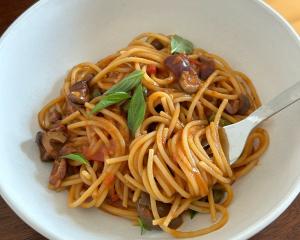Being diagnosed with gluten intolerance or coeliac disease may send people into a tiz, wondering what they are going to be able to eat, but there's help at hand as more and more people go on gluten-free diets.
It is now thought one person in 100 has an intolerance to gluten, or coeliac disease, and as this has become more recognised, more foods are appearing with "gluten-free" on the label.
Gluten is the protein in wheat, rye and barley that gives dough its elasticity and liveliness and makes raised breads possible.
Many items traditionally made with wheat, such as pasta, cakes and biscuits, are now made with alternative grains such as rice, maize, buckwheat, millet, soy or pulse flours so they are suitable for people with coeliac disease.
A gluten-free diet may restrict what you can eat in terms of bread and baked goods, but there are plenty of other things you can eat without restriction - vegetables, fresh or dried fruit, herbs and pure spices, eggs, cheese, nuts, seeds, fresh meat, poultry and fish, lentils, beans, rice.
The tricky thing is finding the hidden gluten in processed and prepared foods, and manufactured goods, where they may be hiding in the form of thickeners and sweeteners, flavours and additives.
Wheat or wheat products may be found in many unsuspected things such as soy sauce, sausages, canned soups, icing sugar, some spices, malt vinegar, beer and whisky.
Even restaurants that offer gluten-free meals may inadvertently use things such as ready-grated cheese or ready-chopped dates, which are coated with flour (maybe rice, maybe wheat) to prevent them clumping.
Bakeries that produce both regular and gluten-free goods may inadvertently cross-contaminate their products and those who are super-sensitive to gluten may find this a problem.
There are many resources to help those on a gluten-free diet, including health professionals, dietitians and support groups such as the New Zealand Coeliac Society.

The Gluten-free cookbook, from the Australian Women's Weekly, is a new publication with information and gluten-free recipes for baking, breakfasts, lunches, and children's parties.
A frustration with not being able to find food for her son prompted Tina Catlow and her father, Blackie Catlow, owner of The Station function centre, to set up the Coeliac Bakery in Mosgiel, a dedicated gluten-free bakery and grocery shop.
They make bread, pizza bases and baked goods, as well as pies and sausages, using rice, maize, tapioca and potato flours.
Yeast-raised gluten-free bread is temperamental and takes a long time to proof, she says.
They sell products by mail order as well as from their shop in Gordon Rd.












